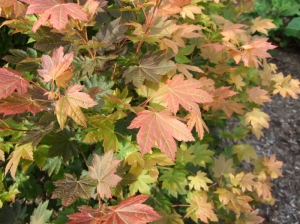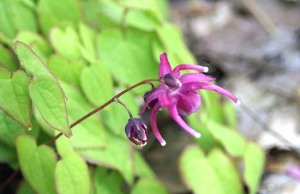WHAT ARE BENEFICIAL INSECTS?
In any well-balanced ecosystem there are pests and natural enemies. For this reason, some pests do need to be present in the environment for natural enemies (i.e. insects we consider ‘beneficial’) to continue to survive. In a garden, a pest is an insect that feeds on and/or transmits disease to desired garden plants, whereas beneficial insects work to maintain the ecosystem balance by consuming their natural enemies. There are three types of beneficial insects:
Pollinators—not only do many bee and fly species pollinate plants, they also eat and/or destroy many ‘bad bugs’ in the landscape.
Predators—some insects are predaceous in their larval stage, others as adults, yet others as both larvae and adult. Additionally, some have a diverse diet, and others such as ladybugs, eat only a certain type of food source (aphids in the case of the ladybug).
Parasitoides—these are insects that live on or in a host insect so they can feed on it, usually killing it in the process. Many are parasitic fly or wasp species that inject their eggs into the host. The eggs hatch then transform into larvae, and because they’re within the host insect, they have a natural food source immediately available.
HOW TO ATTRACT BENEFICIAL INSECTS TO YOUR GARDEN
How do you attract beneficial insects to your garden? Create a diverse environment in your landscape. It’s that simple. What does that mean exactly? A diverse garden is one planted with a mixture of plants, having varied bloom time, flower shape, and size all inter-planted with one another. An example would be planting vegetables and companion flowers such as marigolds, cosmos and nasturtium. Did you know that planting garlic with peas, lettuce and celery will help keep aphids away from your crop?
All beneficial insects require a reliable food source, and for some of them it is specific. When creating your palette remember our beautiful native plants—many wonderful bugs depend on them! The following is a sample list of insectary plants that specifically attract and keep beneficial insects in the garden.
FLOWERS
Sweet alyssum/Lobularia maritima
 Lipine/Lupinus spp.
Lipine/Lupinus spp.
Sunflower/Helianthus annuus
Yarrow/Achillea spp.
Coreopsios/Coreopsis spp.
Cosmos/Cosmos bipinnatus
Candytuft/Iberis umbellate
Goldenrod/Solidago altissima
Marigold/Tagetes spp.
White lace flower or bishop’s weed/Ammi majus
Dianthus/Dianthus spp.
Lilyturf/Lirope spicata
Phlox/Phlox spp.
Blazing star or gayfeather/Liatris spp.
Zinnia/Zinnia spp.
Daisy/Belllis perennis and Leucanthemum spp.
Angelica/Angelica supp.
PLANTS
Buttertfly weed/Ascelpias tuberosa
Bugleweed/Ajuga reptans
Wallflower/Erysimum linifolium
Pincushion flower/Scabiosa columbaria
Joe Pye weed/Eupatorium purpureum
IPM: WHAT IS IT AND WHY IT MATTERS
“Integrated Pest Management (IPM) is a strategy to prevent and suppress pests with minimum impact on human health, the environment and nontarget organisms.” –Steve Dreistadt, University of California
The focus of this systematic approach to pest management is prevention. Rather than waiting for a problem to arise in the garden, we can look at our garden ecology holistically. By monitoring pest populations and identifying pests if and when they do occur, we can then choose a combination of methods to keep things in check; acceptable levels are what we’re after, since complete obliteration is, in most cases, just not feasible. Keep in mind that 90% of the insects found in an average home garden are either benign or beneficial, leaving only the remaining 10% to be called “bad bugs.” Do your research; even bad bugs may have a function you may not necessarily want to attempt to eliminate. The primary premise stressed by IPM is to use the least toxic methods first! Some approaches may include cultural (i.e. keeping the garden clean), biological (i.e. use of beneficial insects— see table below), mechanical (i.e. physically block, trap or remove pests), and chemical (i.e. insecticidal soaps). Tactics vary from garden to garden. Share your approaches, successful and not, with fellow gardeners—all stand to benefit for healthier, more productive gardens.
PROTECT BENEFICIAL INSECTS IN YOUR GARDEN
Because most insecticides are “broad spectrum,” meaning they kill a wide variety of insects, beneficial insects are extremely vulnerable. Should you decide to use insecticides in your home landscape, great precaution must be taken to protect beneficial insect populations.
- Whether natural or chemical-based, choose the least toxic product available for the situation.
- Spray only the area(s) on the plant that are affected
- Spray when many insects are less active: early in the day (dawn or very early morning)
- Do not spray plants that are in bloom!
In sum, once you choose to use beneficial insects in your garden, protect their survival by not using insecticides unless absolutely necessary. Call or come in to your local Dennis’ Seven Dees Garden Center—knowledgeable staff may have alternative suggestions for you!
EXAMPLES OF BENEFICIAL INSECTS FOR THE HOME GARDEN
Decollate Snails – These pointed-shell snails eat brown garden snails
Earthworms – Soil aeration, speeds decomposition process, improves root growth & water retention; waste is considered one of the best organic fertilizers. Most active when temperatures are around 70°F, otherwise any time soil not frozen. Many types of worms will work in the garden—red wigglers, night crawlers, garden worms are all great!
Ladybugs – Eat many garden pests, are attractive, fun for children. Release ladybugs in the evening—they don’t fly at night.
Mason Bees – Increase pollination rates, specifically for early spring fruit trees. Bees are usually sold in larval stage.
Nematodes – Effective against soilborne & wood-boring pests, pests that life part of their life cycle in the soil. Apply anytime when the soil is not frozen. Application lasts 2 years. Do not expose them to sunlight; suspend them in water to help them transport themselves.
Praying Mantis – Voracious eater in the garden. They’ll eat any insect they can catch— even other mandtids and beneficial insects! Very effective against aphids, beetles, caterpillars, grubs and grasshoppers late spring through summer. Usually sold in egg cases to be suspended in the garden; hundreds of insects hatch from each casing.
Lacewings – Eat many garden pests (up to 100 aphids per day!). Sold as eggs, pupae, or larvae. If eggs are purchased, once they’ve hatched they must immediately be released AND there must be available food. With no food source(s) the larvae turn aggressive & eat one another.
RESOURCES
Good Bug, Bad Bug (2008) by Jessica Walliser
Oregon State Extension Services: http://extension.oregonstate.edu (this is a wonderful
resource—many articles available regarding this subject, as well as many others)
WSU Clark County Extension: http://clark.wsu.edu/volunteer/mg/gm_tips/Beneficial.html
(another wonderful resource)
Xerces Society: http://www.xerces.org
Tags: beneficial bugs, beneficial insects, Dennis' 7 Dees, garden center, Gardening, Integrated Pest Management, outdoor living, pollinators, Portland, predators





















